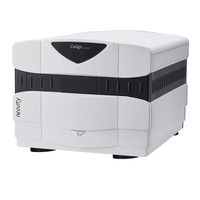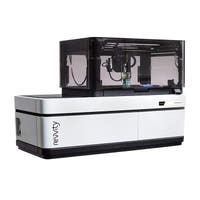Imagine trying to fight a battle in a maze filled with invisible walls, every time you find a path forward, something blocks your way. That's what happens when immune cells try to attack solid tumors like breast cancer. The body's defenses are strong, but inside the tumor, the environment itself works against them, silencing their signals, draining their energy, and stopping them from completing their mission.
For years, scientists have dreamed of finding a way to break through those barriers. And while CAR T-cell therapy has transformed outcomes for blood cancers, success in solid tumors has been harder to achieve. The reason lies in the tumor microenvironment, the protective bubble that helps cancer hide in plain sight.
Seeing what's been hidden
Inside solid tumors, the very cells meant to destroy cancer often become exhausted before they can finish the job. They face chemical signals that suppress their activity and physical barriers that keep them from reaching their targets. For cancers like triple-negative breast cancer, one of the most aggressive and difficult to treat, this resistance has slowed progress for too long.
To change that, researchers need new ways to see and understand what's happening inside the tumor microenvironment (TME). Only then can they design smarter therapies that stay active, adapt to the environment, and keep fighting longer.
Turning insight into impact
We're helping researchers illuminate what's been hidden. Using our advanced imaging and analysis technologies, scientists can now watch immune cells and cancer cells interact in real time, tracking how treatments behave and how the tumor responds.
Tools like the Celigo™ Image Cytometer allow researchers to visualize live-cell activity across thousands of samples, revealing patterns that traditional methods might miss. The Opera Phenix™ Plus High-Content Screening System provides deeper insights, capturing the subtle ways in which immune cells move, communicate, and operate within a complex tumor environment. And when researchers are ready to take their discoveries beyond the dish, the IVIS™ Spectrum 2 Imaging System allows them to see how therapies work in the context of a living animal, bridging the gap between the lab bench and translational biology.
But technology is only part of the story. Every day, our scientists, engineers, and application specialists work side by side with researchers around the world, listening to their challenges, learning from their experiences, and co-creating solutions. Some need help scaling up experiments. Others need workflows that can merge cellular imaging with molecular assays. Together, we design strategies that make those breakthroughs possible.
A new lens on cancer research
The insights gained from these collaborations are transforming how scientists approach solid tumors. By mapping immune behavior and decoding how the tumor microenvironment suppresses response, researchers can design CAR T cells that resist exhaustion, therapies that last longer, and treatments that can adapt to changing conditions inside the body.
For breast cancer research in particular, this means progress toward immunotherapies that can reach the tumor, persist, and protect patients over time. What was once considered too complex to overcome is now becoming clearer, step by step.
From discovery to cure
Cancer will always be a formidable opponent, but every time we uncover a new piece of the puzzle, we move closer to outsmarting it. The path forward lies not only in technology, but in collaboration with scientists, clinicians, and innovators working together to understand, test, and refine what's possible.
At Revvity, that collaboration is in our DNA. Our mission is to give researchers the tools, knowledge, and support they need to turn discovery into progress, and progress into care.
Because every insight brings us closer to a future where the most difficult cancers, can be detected earlier, treated more effectively, and eventually defeated.
We're not just studying cancer; we're helping redefine how we fight it. Challenge accepted.
For research use only. Not for use in diagnostic procedures.




































